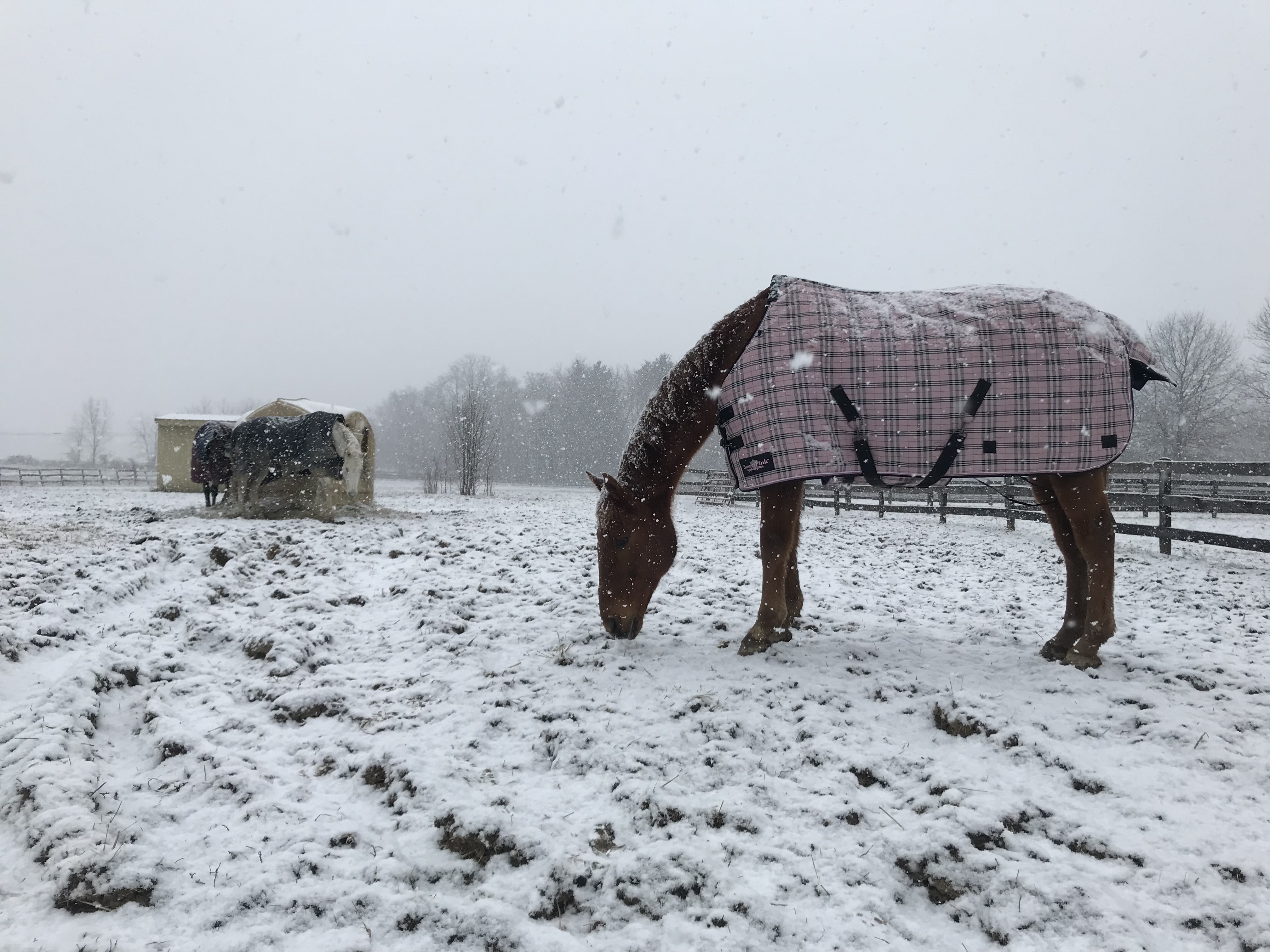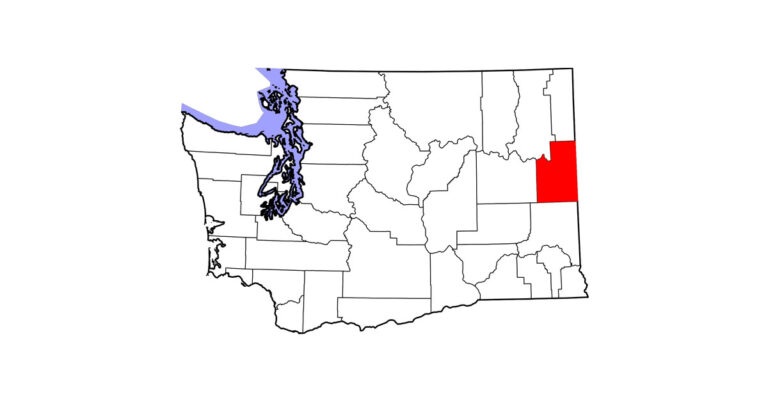Forecasts from The Old Farmer’s Almanac indicate that the months ahead could be some of the coldest and snowiest in years as most of the United States experiences bone-chilling, below-average temperatures and a wintry mix of precipitation. Are you prepared for what the almanac calls an upcoming season of shivers? Here’s how to keep your horses safe, sound and thriving until spring.

Boost Their Hay Ration
As the weather turns colder, your horses are likely to need additional dietary energy to maintain their body temperature and condition. The simplest way to supply it? Feed high-quality forage free-choice. Most horses will eat an additional 2 to 2½ percent of their body weight in hay per day during the winter (20 to 25 pounds for a 1,000-pound horse). The action of beneficial microbes in the cecum and large colon (hindgut) fermenting the hay generates heat that helps maintain core temperature. By comparison, grain creates much less heat as it’s digested in the stomach and small intestine.
Bonus: Free access to hay, along with water and salt, can help a stall-bound horse avoid boredom, especially when inclement weather limits the opportunity for turnout and exercise.
Maximize Water Consumption
An average 1,000-pound horse requires at least 10 gallons of water each day for maintenance no matter what the weather. But your horses may find it difficult to drink their fill if the water chills them. Research has shown that horses drink more in cold weather when the water temperature is between 45 and 65 degrees Fahrenheit. A variety of heating devices—both electric and solar-powered—are available to keep the contents of buckets, automatic waterers and troughs from freezing. Whatever style you choose, check it daily to see that it’s clean, intact and working properly to both satisfy your horses’ thirst and safeguard them from electric shock or other injury.
Be on the lookout: The incidence of impaction colic increases during the winter often due to insufficient water consumption and lack of exercise. (Note: Neither snow nor ice is an adequate water source for a horse.) Early signs of impaction colic include:
- a disinterested, preoccupied or depressed attitude
- decreased appetite
- decreased manure production
- unusually dry, hard manure.
Turn Them Out
Your horses are more comfortable than you are spending hours outside in the cold. The primary reason: their winter coat, which started growing sometime back in July. Its millions of long, thick hairs are designed to trap warm air and hold it close to the body, creating a natural layer of insulation that stands up to all but the worst weather. Strong wind, sleet and cold driving rain can all flatten the haircoat and leave a horse feeling chilled. Access to shelter will provide protection. A sturdy three-sided run-in shed with a roof is ideal, and southerly facing is best. A heavy tree line can serve as a windbreak.
Bonus: Time spent outdoors roaming the pasture supports your horse’s
- digestive system. Movement helps to maintain gut function, reducing the risk of colic.
- hoof and leg health. Exercise improves circulation, encouraging hoof growth. It also contributes to muscle tone and the structural strength of tendons and ligaments. In addition, it can help keep joints from stiffening.
- respiratory system. A horse who’s outdoors isn’t exposed to harmful ammonia fumes that are produced as urine, manure and bedding decompose in a stall. That significantly reduces the risk for developing pneumonia, recurrent airway obstruction (heaves) and other ailments associated with airway damage.
- behavior. Your horse is likely to be calmer and more cooperative under saddle when he’s burned off excess energy in the pasture. Plus, there’s less chance he’ll develop vices from being bored. And if he has pasturemates, he may be more content simply from spending time with them.
Blanket as Needed
Even with a winter coat, your horse may require a blanket—especially if he is clipped, very young or very old, or underweight. Base your selection on the barn temperature if he is going to be in his stall or the prevailing weather if he’ll be turned out. A waterproof blanket is a must when the forecast includes rain or snow.
Groom your horse before you blanket to rid his coat of dust, dirt and dander that could make him uncomfortable or itchy. And be sure that the coat is dry. Blanketing a wet horse—or leaving a blanket on one who is sweating—flattens the coat, leaving him vulnerable to dangerous chill. Remove the blanket regularly to inspect it for damage and reposition it. Take the opportunity to also assess your horse’s condition. Look for signs of weight loss or gain, lice, fungal and bacterial skin infections, and hair loss and sores that may be the result of an ill-fitting blanket.
Doublecheck: You’ll know your horse’s blanket fits when
- the top of the front closure lines up with the point of his shoulder and the neckline lays smoothly above his shoulder without pulling.
- you can slide one hand between the blanket and your horse’s withers.
- his barrel is covered entirely and the edge of the blanket reaches to just below the elbow and stifle.
Rely on Routines
Be a stickler about maintaining regular veterinary appointments and dental checkups to keep your horse in good health. Schedule the farrier, too. Ask for advice about pulling your horse’s shoes to improve his traction on snow and ice. In some cases, snow pads and studs attached to the shoes may be a good option. Continue riding if possible—it’s good for your well-being and your horse’s. Be mindful of the footing and especially careful in deep, heavy or wet snow to prevent tendon injuries.
Be on the lookout: Pick hooves whenever your horse comes in from outside to clear ice and snow that may have packed into balls, making it hard for him to walk and increasing his chance of slipping and falling. Also check for other weather-related ailments: hoof bruises caused by frozen ground and thrush, a bacterial infection associated with moist footing.
Practical Horseman thanks Pamela A. Wilkins, DVM, PhD, DACVIM, DACVECC, of the College of Veterinary Medicine at the University of Illinois Urbana-Champaign, for her technical assistance in the preparation of this article. A professor of veterinary clinical medicine, Dr. Wilkins developed her interests in equine medicine and critical care, particularly neonatology, as a veterinary student at Cornell University’s College of Veterinary Medicine. She joined the faculty of the University of Illinois in 2008, has published many works and lectured extensively throughout the United States and Europe.
This article originally appeared in the Winter 2021 issue of Practical Horseman.










